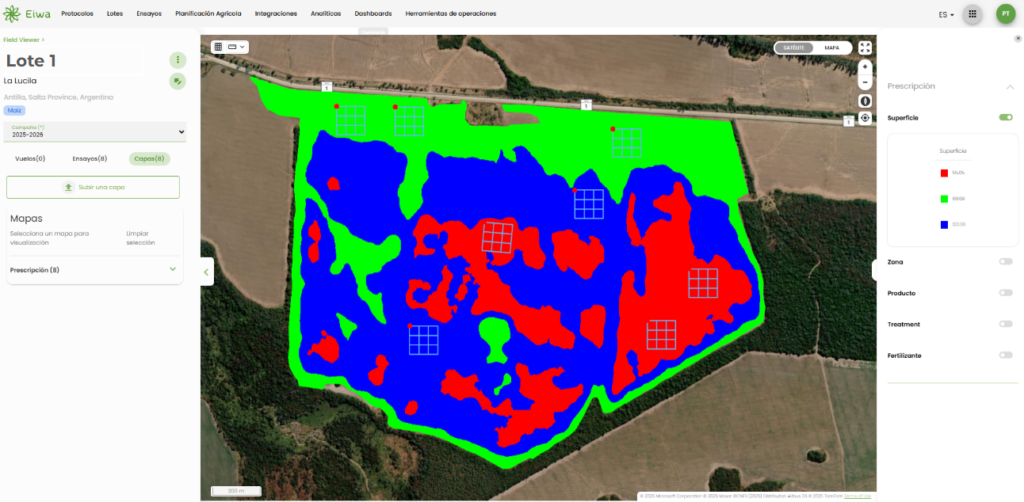The analysis and interpretation of results in on-farm experiments are crucial steps to transform raw data into valuable information for decision-making. Conducting an experiment in the field allows the farmer to evaluate management practices, seed populations, varieties, and various other inputs under real field conditions. However, the value of these experiments depends directly on a careful analysis, capable of identifying patterns and significant differences between the tested treatments.
The first step in the analysis is the organization of the collected data. Information such as productivity, climatic data, soil characteristics, and measurements taken during the crop cycle need to be gathered and structured correctly. The use of digital tools, such as the Eiwa® platform, facilitates this step, allowing all data to be centralized and ready for analysis. After collection, statistical analysis plays a fundamental role. Often, the differences observed between treatments can be influenced by random factors, such as natural field variations or operational errors. Therefore, techniques such as analysis of variance (ANOVA) help to determine whether the differences between treatments are statistically significant or just the result of random variations. When the results are significant, the farmer can have greater confidence in implementing the tested practices on a larger scale on their property.

The repetition of treatments is an essential factor for the robustness of the analyses. It allows for a more reliable comparison and reduces the influence of external factors. In on-farm experiments, the variation within a field can be large, which makes the inclusion of repetitions even more important. When the data are analyzed correctly, it is possible to identify which practices are truly effective, even in a high variability environment. Another relevant point is the spatial analysis of the data. Precision agriculture, combined with on-farm experimentation, allows exploring the variability within the field, using productivity maps and other georeferenced information. Thus, it is possible to assess how the treatments responded in different productive potential zones of the field. This approach provides more detailed insights, allowing specific adjustments for each area, rather than applying a uniform recommendation to the entire field.
The interpretation of the results should be based on the objectives defined at the beginning of the experiment. If the objective was to find the ideal fertilizer dose, for example, the data should seek not only the fertilizer dose that presents the maximum productivity, but also the economic viability of that dose. Thus, the farmer can balance the cost-benefit of the different tested practices. The integration of agronomic and economic analyses is crucial for decisions to be sustainable in the long term.
Digital tools help simplify this interpretation. The Eiwa® platform, for example, offers intuitive visualizations, detailed reports, and integrated analyses, allowing farmers and consultants to quickly understand the results and make evidence-based decisions.

Finally, sharing the results with the agricultural team and, in some cases, with other farmers, can generate collective learning. This collaborative interpretation process promotes a greater understanding of best practices and encourages the adoption of innovative solutions.
The analysis and interpretation of results are, therefore, the final link that transforms on-farm experimentation into a strategic tool. With well-analyzed data, the farmer not only validates the tested practices, but also acquires knowledge to continuously improve management, increasing the productivity and profitability of their property in a sustainable way.

This article was written in collaboration with Dr. Guilherme Sanches (Ph.D.), a specialist in Precision Agriculture, Digital Agriculture, and Artificial Intelligence applied to agribusiness, with extensive academic and international experience.